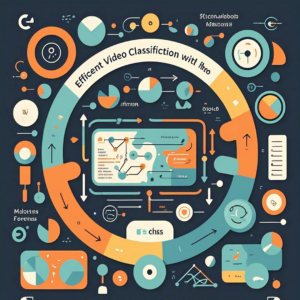Efficient Video Classification with Active Learning Framework
Introduction
High-quality and consistent annotations play a crucial role in developing robust machine learning models. Traditionally, the process of creating annotations is resource-intensive, involving cycles where domain experts annotate datasets, which data scientists then use to train models. This process often results in a lengthy and inefficiency-driven cycle that can lead to delays and increased costs.
The development of machine learning systems overly emphasizes model complexity at the expense of high-quality datasets. Often, organizations resort to third-party annotators due to time and resource constraints. These external annotators, however, may lack a comprehensive understanding of the intended context of the model’s application, leading to inconsistency, particularly with subjective tasks that involve nuanced judgment.
Challenges of Conventional Annotation Techniques
The current methodologies in labeling data often hinder rapid iterations necessary for developing accurate machine learning models. Domain experts have limited time, so there are fewer annotation cycles, leading to models that may not effectively recognize edge cases or adapt quickly to new data. This cycle of inadequately annotated datasets can risk the performance of ML systems, resulting in model drift and a potential loss of stakeholder confidence.
Acknowledging these challenges, it becomes clear that direct involvement from domain experts following a human-in-the-loop approach is essential. This not only enhances the quality of the annotations but also assists in building trust and ownership among experts involved in the process.
Proposed Solution: An Interactive Video Annotation Framework
To address the issues present in traditional data annotation processes, a novel framework has been introduced. This innovative system utilizes active learning combined with advanced machine learning approaches, allowing a seamless integration of model building into the data annotation workflow. The objective is to create a self-service architecture that empowers users, enabling a continuous annotation process adaptable to the demands of dynamic video content.
Video Understanding: A Vital Component
Video understanding necessitates recognizing visuals, events, and concepts within video segments. Such understanding is integral to a multitude of applications, including searching and retrieving content, personalization of media suggestions, and the creation of promotional materials. The proposed framework enables users to train machine learning models effectively for video understanding, resulting in a scalable system capable of processing extensive video libraries.
Video Classification and Its Importance
Classification in video processes involves assigning specific labels to video clips, often accompanied by a prediction score. This method allows flexibility in how models are developed and refined, aiding users in gaining a comprehensive understanding of video content. A careful selection of classifiers provides granular insights that can be utilized to enhance user interactions with media.
Step-by-Step Process Overview
The video annotation framework is organized into a structured three-step process designed for efficiency and ease of use.
Initial Search for Examples
The first step involves locating an inception set of examples within a large, diverse video corpus. Users can initiate the annotation process through a text-to-video search powered by advanced encoders specifically created for extracting meaningful video and text embeddings. For instance, an initial search might target phrases like “wide shots of buildings” to find relevant examples quickly.
Active Learning Integration
The second step incorporates an active learning loop. Upon gathering the initial set of examples, a lightweight binary classifier is formed using video embeddings. This classifier evaluates all clips in the corpus and organizes clips into feeds for further annotation. The positive and negative feeds present high and low scoring examples, respectively, giving users an advantageous perspective on classifier performance during early training. This setup also includes feeds dedicated to “borderline” examples, stimulating considerations for additional labels and concepts, alongside a random feed that emphasizes annotated diversity.
Review and Refinement
The final stage presents annotated clips, where users can review and identify any inconsistencies in the annotations. This stage fosters a back-and-forth process that allows users to find insights within the annotated clips that could lead them back to the earlier steps for refining their models or discovering new annotations based on the gathered data.
Experimental Evaluation
To validate the effectiveness of this annotation framework, a series of experiments were conducted, with professional video experts tasked with annotating a diverse set of labels across a substantial video corpus. The resulting performance of the interactive annotation system was assessed against baseline methodologies, revealing a marked improvement in the quality of video classifiers. The data demonstrated that higher quality annotations directly contributed to enhanced classification outcomes, emphasizing the practical value of this interactive framework.
Conclusion: Enhancing Machine Learning Workflows
The interactive framework discussed provides a promising avenue for overcoming common challenges encountered within conventional machine learning training regimes. By leveraging active learning and incorporating the expertise of domain experts directly into the annotation process, the system cultivates a more manageable, efficient workflow that enhances the quality of output. Additionally, utilizing a Kubernetes namespace for resource management ensures seamless scalability, enabling rapid deployment in response to evolving demands for model refinement.
As a result, users benefit from a structured methodology that supports effective decision-making while maintaining engagement in a hands-on manner. With experimental results highlighting notable improvements in model precision, it is clear that this innovative framework represents a significant leap forward in the realm of video annotation and understanding.
Do you like to read more educational content? Read our blogs at Cloudastra Technologies or contact us for business enquiry at Cloudastra Contact Us.
